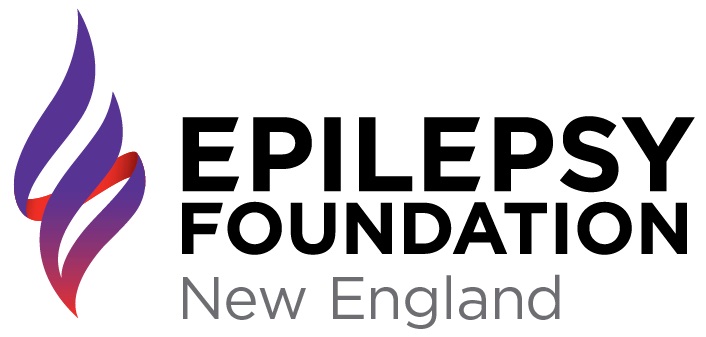Seizure Onset
Seizures can begin in one or both hemispheres of the brain, alter an individual’s awareness of their surroundings, or cause an individual to experience motor symptoms. An accurate diagnosis can play a large role in identifying the specific symptoms, risks, and treatment options for an individual’s specific type of seizure or epilepsy.
Focal Onset vs. Generalized Onset Seizures
Generally, the most common types of seizures can be distinguished by where they begin within the brain. The human brain is divided into two hemispheres: a right hemisphere and a left hemisphere. Those seizures that involve networks in just one hemisphere of the brain are referred to as Focal Onset Seizures, while those that begin in both hemispheres of the brain are referred to as Generalized Onset Seizures.
Focal Onset Seizures
Types of Focal Onset Seizures
In most cases, Focal Onset Awareness Seizures can be further classified by the level of awareness a person has when they are experiencing the symptoms of a seizure, and on the seizure causes the individual to experience motor symptoms.
Aware vs. Impaired Awareness Focal Seizures
Focal seizures are subdivided into categories depending on the person’s level of awareness: Aware vs. Impaired Awareness. The Focal Aware Seizure replaces the previously used term “simple partial seizure,” while the Focal Impaired Awareness Seizure replaces the term “complex partial seizure.”
Motor vs. Non-Motor Focal Seizures
Sometimes it is difficult to know for certain if a person has impaired awareness and in these cases a focal seizure can be described by the motor symptoms which the person may or may not experiences during a seizure. The type of symptoms the person experiences would help to then classify a seizure as motor vs. non-motor.
Focal Onset Motor Seizures
Motor seizures cause a change in muscle activity, such as jerking of a finger, stiffening of one part of the body, or weakness in specific muscles. The movements may spread from one area and involve one side of the body or sometimes extend to involve muscles on both sides of the body. Sometimes motor seizures present with weakness. This can affect specific muscles or affect speech. Other symptoms of motor seizures include coordinated actions, for example, automatic repetitive hand movements, referred to as automatisms.
Automatisms
Typically involve involuntary, automatic, coordinated, and repetitive movements of the person’s hands, feet, vocal chords, lips and face, or other areas.
Tonic
Involves a brief increase in muscle tone for the duration of the seizure
Atonic
Involves a sudden loss in muscle tone that may involve the head, jaw, trunk, or limb musculature
Clonic
Characterized by rhythmic jerking of one limb or one side of the body
Epileptic Spasms
Features sudden flexion or extension (or mixed flexion-extension) of specific muscles, often occurring in a series
Hyperkinetic
Characterized by sudden, large, irregular movements by limbs or one side of the bod, including rocking, pedaling, jumping, or thrusting
Myoclonic
Involves brief jerks or muscle contractions, usually in single bursts or short clusters
Focal Onset Non-Motor Seizures
Non-motor seizures can cause changes in any one of the senses. Generally, a person experiencing a Focal Onset Non-Motor Seizure remains alert and able to interact, and these types of seizures generally last seconds to less than two minutes.
Autonomic
Cause changes in the part of the nervous system that automatically controls bodily functions including:
- Strange or unpleasant sensations in the stomach, chest, or head
- Changes in the heart rate or breathing
- Sweating or goose bumps.
Behavior Arrest
Cause decrease in amplitude or outright arrest of ongoing motor activity for the duration of the seizure, which may be persistent and dominant until the seizure ends.
Emotional/Cognitive
Change how people think, feel, or experience things including:
- Problems with memory, garbled speech, an inability to find the right word, or trouble understanding spoken or written language
- Sudden emotions like fear, depression, or happiness with no outside reason
- Out-of body and déja vu experiences ("I've been through this before")
- Jamais vu ("This is new to me"— even though the setting is really familiar)
Sensory
Can affect any of an individual’s five senses, including taste, smell, touch, hearing, or vision, with symptoms including:
- Smelling or tasting things that aren’t there
- Hearing clicking, ringing or a person’s voice when there is no actual sound
- Experiencing a sensation of pins and needles, numbness or pain
- Feeling a sensation of spinning or floating in space
- Seeing visual hallucinations or things that are not there
- Experiencing illusions, or distortions of true sensations
Generalized Onset Seizures
Generalized Onset Motor Seizures
When most people think of a “convulsive seizure,” they are usually thinking of a General Onset Motor Seizure. These seizures present with stiffening (tonic) and jerking (clonic) changes in muscle activity. They often last 1-3 minutes, and were previously referred to as “grand mal” seizures.
Tonic-clonic
Generally involving loss of consciousness, muscles stiffening, and jerking movements
Clonic
Characterized by repeated jerking movements, typically without the presence of muscle stiffening
Tonic
Characterized by muscle stiffening for the duration of the seizure, typically without the presence of jerking movements
Myoclonic
Feature brief shock-like jerks of a muscle or group of muscles, often while the person experiencing the seizure is awake and responsive
Myoclonic-tonic-clonic
Usually cause abnormal movements - including jerking movements and muscle stiffening - on both sides of the body at the same time
Myoclonic-atonic
Characterized sudden loss of muscle control or muscle tone on both sides of the body that can cause an individual to fall to the ground
Atonic
Typically involves a sudden loss in muscle tone that may cause the person experiencing the seizure to go limp
Epileptic spasms
Features sudden flexion or extension (or mixed flexion-extension) of specific muscles, often occurring in a series
Generalized Onset Non-Motor Seizures
Also known as "absence seizures" and previously known as petit mal seizures, Generalized Onset Non-Motor Seizures typically feature a short period of "blanking out" or staring into space.
Typical
Usually involves less than a 10 second interruption of ongoing activities, often recognized as a person staring off into the distance or possibly a brief upward deviation of the eye.
Atypical
Person will experience a change in muscle tone or make some kind of movement in addition to staring into space, which may include blinking, chewing, or hand gestures.
Myoclonic
Typical "staring into space" features are often combined with brief shock-like jerks of muscles or muscle groups.
Eyelid myoclonia
Often characterized by brief upward jerk of the eyes and fluttering of the eyelids, often lasting under 4 seconds.

